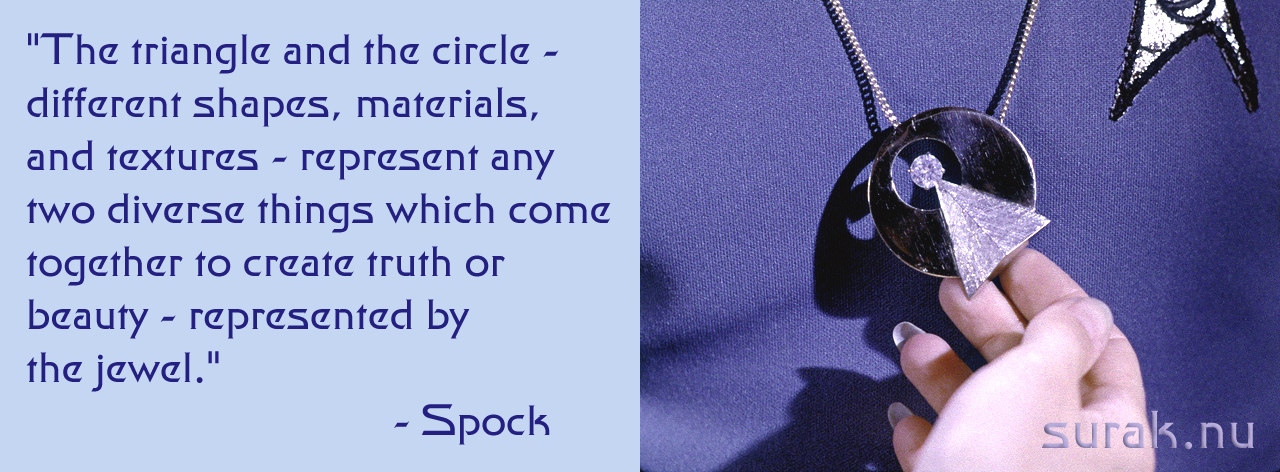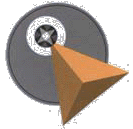IDIC: Infinite Diversity in Infinite Combinations
"Intolerance in the 23rd century? Improbable! If humankind survives that long, we will have learned to take a delight in the essential differences between people and between cultures. We will learn that differences in ideas and attitudes are a delight, part of life’s exciting variety, not something to fear. It’s a manifestation of the greatness that God, or whatever it is, gave us. This infinite variation and delight, this is part of the optimism that we built into Star Trek."
|
"The glory of creation is in its infinite diversity—and the ways our differences combine to create meaning and beauty."
|
The triangle and the circle are two different shapes, materials, and textures. They represent any two diverse things which come together to create truth or beauty, represented by the jewel in the center.
The most revered Vulcan symbol, combining variations in texture, shape, and color. The name is Terran, an acronym for “Infinite Diversity in Infinite Combinations”; the Vulcan name is not known. (This has changed since 1976, see below) Spock‘s IDIC, which can be worn as a pin or as a pendant, is a circle and triangle of white and yellow-gold metals in shiny and textured (or Florentine) finish, with a white jewel. Spock explains that the different shapes and materials represent the diverse things which come together to create truth and beauty; the glory of creation lies in its infinite diversity and meanings. (“Is There in Truth No Beauty?”) The above text is taken from The Star Trek Concordance by Bjo Trimble, 1976 Steve Boozer has this additional item: According to the unnamed Vulcan Master who tutored teenaged Tuvok, it is called kol-ut-shan – “the cornerstone of our beliefs” [VOY “Gravity”].
The IDIC medallion first appeared in the third season of the original series in the episode "Is There in Truth, No Beauty?" with an explanation of it’s symbolism given in the dinner scene. The complete version of that explanation was not in the aired version of the episode, but was in the final, unfilmed draft. Following are both versions—research and italicized comments by Greg Schnitzer.*
“Mankind will reach maturity on the day it learns to value diversity—of life and ideas. To be different is not necessarily to be ugly; to have a different idea is not necessarily to be wrong. The worst thing that could happen is for all of us to look and think and act alike. For if we cannot learn to value the small variations among our own kind here on earth, then God help us when we get out into space and meet the variations that are almost certainly out there.”
|
More information about the IDIC is here.


